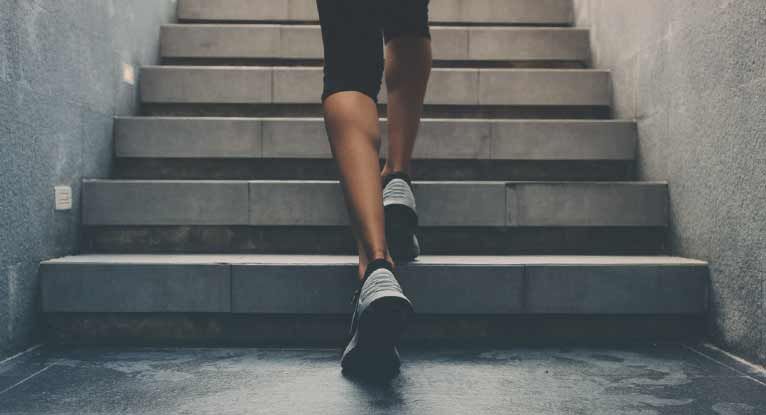What’s the best calf workout for stubborn calves? Calves seem like the ultimate genetic muscles. Seven-time 212 Mr. Olympia Flex Lewis has them in spades, though he has rarely set foot in a calf machine. Meanwhile, 2-time Mr. Olympia Big Ramy sports peg legs, even as everything above his knees has ballooned up. A.I. ranked calves #1 as the hardest muscle to grow. Calves, as Millhouse preaches, are the cruelest muscles. Either you got ’em or you don’t. And if you don’t, it seems like you never will, no matter what you do. You’re cursed. But not so fast…
We can’t promise to turn Ramy calves into Lewis cows, but we’ll deliver the best calf workout strategies for combating the two most common genetic obstacles: too many slow-twitch muscle fibers and high tendon attachments. Let’s get those stubborn calves growing!
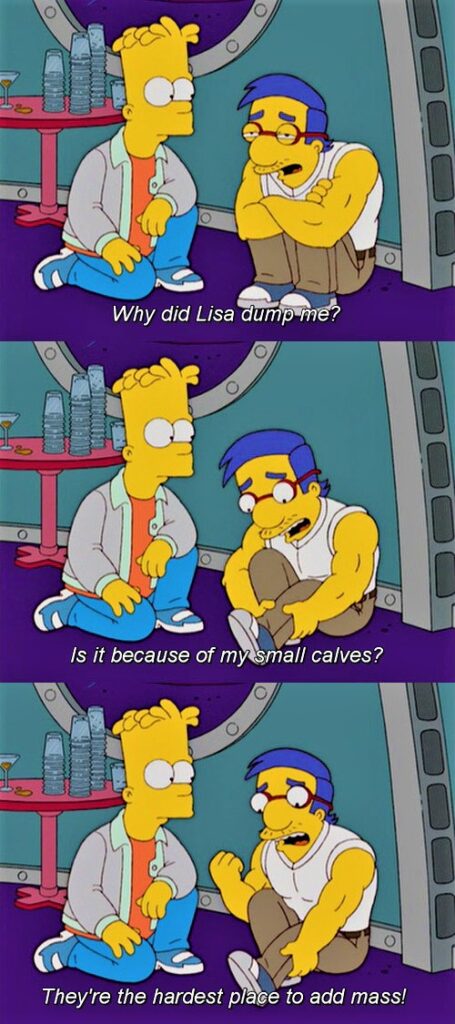
CALF WORKOUT: SLOW & FAST TWITCH
The calves are dominated by two muscles, the gastrocnemius and, lying beneath it, the soleus. The former is made up of about 50% slow-twitch fibers, on average, and the latter is a whopping 80% slow-twitch. The rest of the fibers of both muscles are, on average, fast-twitch. (By contrast, the hamstrings are about 70% fast-twitch.) This makes sense because slow-twitch are the endurance fibers, and your calves do mostly low-intensity work: walking and standing.
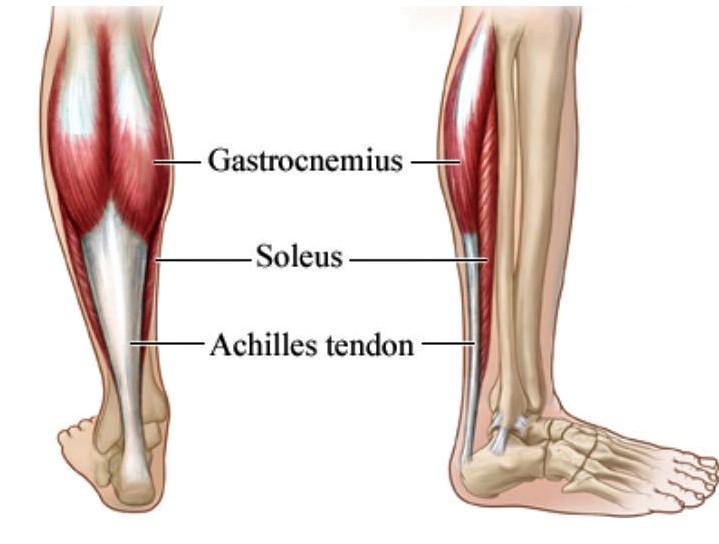
Slow-twitch take longer to fatigue than their fast cousins, and they recover quicker. They’re also slower growers. Back to those average percentages, there’s a lot of variability in the numbers. How much? One study found the soleus slow-twitch ranged from 64-100% and the gastrocnemius from 34-82%. So, it’s probable those who grow easily from calf raises have more fast-twitch while those who work twice as hard for little of calf growth possess almost entirely slow-twitch. And this is determined by your DNA and cannot be changed. Some people are sprinters (more fast-twitch), some are marathoners (more slow-twitch).
ARNOLD’S CALF WORKOUT
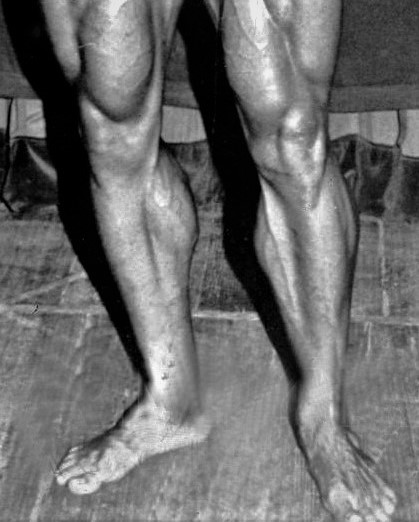
There are two schools of thought on calf rep-ranges: go high and light to tire out the enduring slow-twitch fibers or go low and heavy because calves are already accustomed to high-rep work (walking). We offer a third school that splits the difference: Go moderately-high (10-20 reps) with the heaviest weights you can use through full ranges of motion. What your calves are really used to is quick, half reps (walking), so go slow and maximize the stretch and contraction on each rep. Calves are also used to bodyweight resistance, so up the weights whenever possible.
The moderately-high reps and progressive-strength strategy was adopted by Arnold Schwarzenegger, who remains one of the few bodybuilders who turned a glaring calf weakness (in the ’60s) into a strength (in the ’70s). Curse be damned. He also took advantage of slow-twitch fibers’ rapid recovery by hitting calves with 15 sets every training day (six days per week). You likely don’t have the time for this (Arnold was working out twice daily). Still, try hitting calves in every other workout.
ARNOLD SCHWARZENEGGER CALF WORKOUT
Standing Calf Raise — 5 x 10-20 reps
Seated Calf Raise — 5 x 15-20 reps
Calf Press — 5 x 15-20 reps
CALF WORKOUT: HIGH ATTACHMENTS
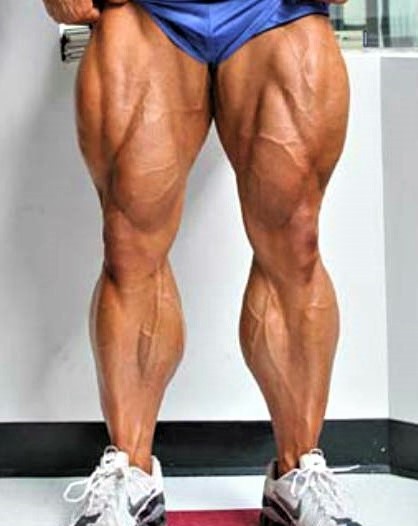
“If I had calves like that, I’d wear shorts all the time, even in the winter,” Johnnie Jackson joked about Erik Fankhouser’s calves backstage at the 2010 Mr. Olympia. The main difference between Jackson’s “pipe-cleaners” and Fankhouser’s “footballs,” other than their circumferences, is that the former was cursed with short muscles and long tendons while the latter was blessed with the inverse: long muscles and short tendons. Muscle attachments and lengths are crucial components of muscle size, and nowhere is this more evident than the lower legs. Unfortunately, there’s nothing you can do to “pull down” high calves. (Even implants merely push out short calf muscles.) Instead, you need a workaround.
HIGH GASTRO CALF WORKOUT
If you have very high gastrocnemii (yep, that’s the plural), your best strategy is to shift much of the focus to your solei (also the plural), because the solei attach much lower and can therefore give some breadth to the bottoms of your lower legs. Try doing twice as much soleus work as gastrocnemius work.
Our sample routine doubles up on seated calf raises (with different rep schemes), but you can also install exercise variety by doing some seated raises one-legged or free-weight (with a barbell or two dumbbells held on your thighs near your knees). We’ve added tibialis raises—done with a tibialis machine, a band, or a leg curl machine (seated and facing backwards)—because growing this shin muscle will give depth to your lower legs from the front.
If you’re never going to have impressive gastros because they’re hiding up high, don’t keep doing the same thing that’s never worked. Think different. Work the rest of your lower legs harder.
HIGH GASTRO CALF WORKOUT
Seated Calf Raise — 4 x 10-12 reps
Standing Calf Raise — 4 x 15-20 reps
Tibialis Raise — 3 x 15-20 reps
Seated Calf Raise — 3 x 20-30 reps
Finally, our two strategies don’t have to be either/or. You may want to alternate between the two workouts. On every calf exercise, always go slow and maximize the stretch and contraction of each rep. Think differently and work hard and consistently to combat bad lower leg genetics.
Related content:



































